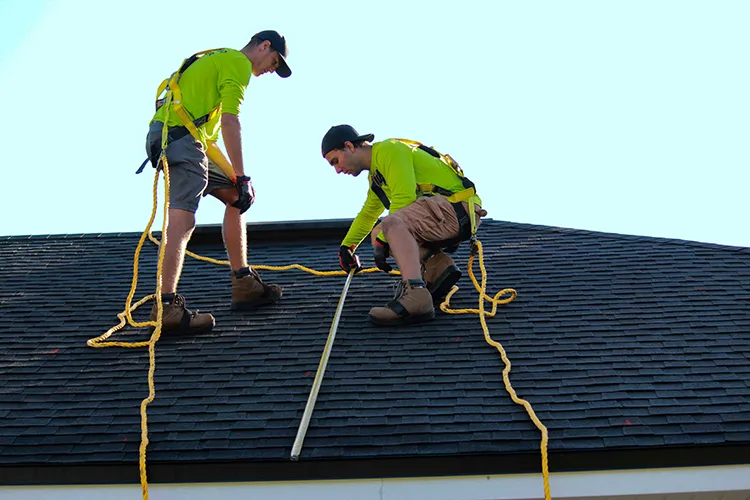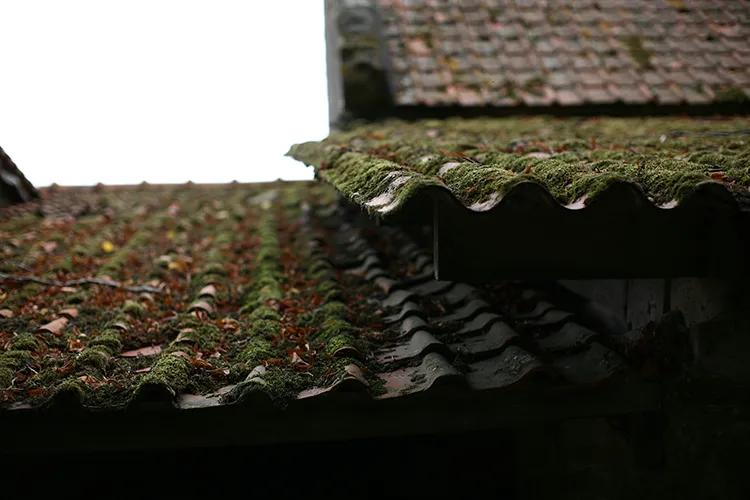
When we travel long-term, we usually think about luggage, flight times, and places to visit.
But what about our roof?
Leaving our home unattended for weeks or months can cause problems, especially if the roof isn’t ready for it.
Small issues like a loose shingle or a blocked gutter can become big, expensive damage.
In this article, we’ll explain why roof protection is important and share 11 simple tips for keeping it in good shape while we’re away.
Why Roof Protection Matters During Long-Term Travel
Roofs take a beating from sun, rain, wind, and debris—all year long.
If no one’s home, you won’t notice when things go wrong. And by the time you return, the damage might already be costly and require a replacement.
Instant Roofer’s calculator can show you just how costly it will be in your city. Prices are up, so beware!
Here’s why roof prep should be on your pre-travel checklist:
- Leaks can start from tiny cracks and spread fast
- Pests like squirrels or birds can sneak in through holes or vents
- Debris buildup leads to water damage and rot
- Insurance might not cover damage from neglect
It doesn’t take long to prep your roof, and it can save you from stress later.
11 Essential Tips to Protect Your Roof
1: Get a Professional Roof Inspection Before You Leave

Start with the basic but most important step—hire a roofer to do a full inspection.
Ask them to check:
- Cracked or missing shingles
- Damaged or loose flashing surrounding chimneys and vents
- Worn or exposed nail heads
- Signs of water damage or previous repairs
Most inspections cost $200-500, but they can save us thousands in emergency repairs.
2. Clean Gutters and Downspouts
Clogged gutters cause serious problems when you’re not around to notice. Water backs up and can damage our roof, siding, and foundation.
You must remove all leaves, twigs, and debris from gutters and downspouts. Then, test the drainage by running water through the system.
Clean gutters prevent:
- Ice dams during winter
- Water pooling on the roof
- Pest nesting areas
- Foundation damage from overflow
Clean gutters = fewer chances of water damage.
3. Trim Overhanging Branches
Tree branches hanging over your roof create multiple problems. Strong winds can break them and damage shingles or gutters.
Even healthy branches drop leaves and create moss-friendly conditions. Thus, you should trim any branches within 10 feet of your roof.
This includes:
- Dead or weak branches that could fall
- Branches that scrape against shingles
- Tree limbs that make gutter cleaning difficult
Professional tree service costs more but handles large branches safely. For smaller jobs, you can do it yourself with proper tools and safety gear.
4. Inspect and Seal Flashing
Flashing protects spots where the roof connects to vents, chimneys, and skylights. Over time, it can crack or peel.
Check flashing for:
- Cracked or missing caulk
- Loose or bent metal pieces
- Signs of water stains or damage
- Gaps where water could enter
Focus on these weak spots before you go.
5. Secure or Remove Loose Items on the Roof
Satellite dishes, antennas, and solar panels need secure mounting. High winds during storms can turn loose equipment into dangerous projectiles.
Inspect roof-mounted items for:
- Loose bolts or brackets
- Damaged mounting hardware
- Rust or corrosion on metal parts
- Signs of movement or shifting
Tightening hardware or adding extra support prevents equipment from damaging your roof or neighboring properties during severe weather.
6. Treat or Clean Moss and Algae

Moss and algae hold moisture against roof materials, causing decay and damage. Left untreated, these growths spread quickly.
Treatment options include:
- Commercial moss killers
- Zinc or copper strips along the roof peak
- Professional cleaning services
- Preventive treatments for high-risk areas
The key is to remove existing growth and prevent future problems.
7. Ensure Proper Attic Ventilation
Poor ventilation leads to ice dams, condensation damage, and increased energy costs.
Check that:
- Soffit vents remain clear of debris
- Ridge vents function properly
- Attic fans operate correctly
- Insulation doesn’t block airflow
A dry, ventilated attic keeps the roof healthy.
8. Check for Pest Entry Points
Animals love to nest in warm, dry spaces. The roof and attic provide perfect conditions for unwanted guests.
Look for:
- Holes or gaps in soffits and fascia
- Damaged screens over vents
- Loose or missing vent covers
- Signs of previous animal activity
Sealing entry points prevents animals from moving in while you’re gone. Steel wool and hardware cloth work better than foam or caulk for blocking determined pests.
9. Install a Roof Monitoring System or Security Camera
Smart tech can help us keep an eye on things.
Options include:
| Tool | What It Does |
| Security Cameras | Show us the roof and yard in real time |
| Leak Sensors | Send alerts if water is detected in the attic |
| Smart Alarms | Notify us if there’s unusual movement or noise |
10. Have a Trusted Neighbor or Property Manager Check Regularly
Technology can’t replace human eyes on your property. You need someone local to check your home regularly, especially after storms.
Instruct your designated person to:
- Walk around the exterior every few weeks
- Look for obvious damage after severe weather
- Check gutters for overflow or damage
- Contact us immediately if problems arise
A simple message or photo update gives us peace of mind.
11. Update Your Home Insurance and Document the Roof’s Condition
Review your insurance coverage and document the roof’s condition. Many policies have specific requirements for unattended homes.
You must:
- Take photos of your roof from multiple angles
- Document any existing issues or repairs
- Confirm your policy covers unattended home damage
- Understand the requirements for regular inspections
Good documentation protects you if we need to file claims later.
Wrapping Up
When traveling, the last thing you want is to worry about your roof back home.
A little preparation goes a long way. These 11 tips help you prevent damage, save money, and enjoy your trip without roof-related surprises.
Before the next flight, schedule that inspection, clear those gutters, and check off this list.
It only takes a few hours, but the peace of mind lasts the entire trip.





